#video production Dublin
Text
Video Production Dublin
Unlock the power of visual storytelling with Subculture Media. Our expert team in video production Dublin crafts compelling videos tailored to your brand. From concept to creation, we bring your vision to life, delivering impactful content that resonates with your audience. Elevate your brand with Subculture Media today!
0 notes
Text
The Ultimate Guide to Boosting Your Irish Business with Animated Video Production

In today's digital age, businesses are constantly seeking innovative ways to engage with their target audience and stand out from the competition. One such powerful tool that has gained immense popularity is animated video production. Animated videos have the ability to captivate viewers, convey complex messages in a simplified manner, and leave a lasting impression. In this comprehensive guide, we will explore how animated video production can boost your Irish business and help you reach new heights of success.
How Animated Videos Can Boost Your Irish Business
Animated videos have become a game-changer in the world of marketing and business promotion. They offer a unique opportunity for businesses to tell their story, showcase their products or services, and connect with their audience on an emotional level. By harnessing the power of visuals, animation, and storytelling, animated videos can effectively grab attention and leave a memorable impact.
One of the key advantages of animated videos is their versatility. They can be used across various marketing channels, including websites, social media platforms, email campaigns, and presentations. This flexibility allows businesses to reach a wider audience and maximize their brand exposure.
Furthermore, animated videos can help simplify complex concepts. Whether you're explaining a complex product or service, demonstrating a process, or educating your audience, animation can break down information into easily digestible visuals. This not only enhances understanding but also increases engagement, as viewers are more likely to retain information presented in an entertaining and visually appealing manner.
Types of Animated Videos for Different Business Needs
When it comes to animated video production, there are various types of videos that can cater to different business needs. Let's explore some of the most popular ones:
Explainer Videos
Explainer videos are short, concise videos that aim to explain a product, service, or concept in a simple and engaging manner. These videos typically follow a narrative structure, combining visuals, animations, and voiceovers to deliver a compelling message. Explainer videos are excellent for introducing your Irish business to potential customers, creating brand awareness, and driving conversions.
Product Demo Videos
Product demo videos allow you to showcase your offerings in action. These videos highlight the features and benefits of your product or service, giving potential customers a better understanding of what you offer. By visually demonstrating how your product solves a problem or meets a need, you can build trust and credibility with your audience. Product demo videos are particularly effective for e-commerce businesses or those selling complex products.
Brand Storytelling Videos
Brand storytelling videos go beyond showcasing products or services. They focus on the values, mission, and vision of your Irish business, allowing you to connect with your audience on a deeper level. These videos often evoke emotions and create a sense of authenticity and relatability. By sharing your brand story through animation, you can establish a strong brand identity and foster a loyal customer base.
Tips for Creating Effective Animated Videos
Creating an effective animated video requires careful planning and execution. Here are some tips to help you make the most out of your animated video production:
Define Your Objective
Before diving into the production process, clearly define the objective of your animated video. Are you looking to increase brand awareness, generate leads, or educate your audience? By having a clear objective in mind, you can tailor your video content and messaging accordingly.
Know Your Target Audience
Understanding your target audience is crucial for creating a video that resonates with them. Conduct market research to identify your audience's preferences, pain points, and interests. This knowledge will guide your scriptwriting, animation style, and overall tone of the video.
Craft a Compelling Script
The script is the foundation of any animated video. It should be concise, engaging, and aligned with your brand voice. Use storytelling techniques to captivate your audience and deliver your message effectively. Remember to keep the script simple and avoid overwhelming viewers with excessive information.
Collaborate with a Professional Animation Studio
While there are DIY animation tools available, collaborating with a professional animation studio can elevate the quality and impact of your video. A professional studio has the expertise, resources, and creativity to bring your vision to life. They can also provide valuable insights and suggestions to enhance your video production.
Optimize for SEO and Social Sharing
To maximize the reach and visibility of your animated video, optimize it for search engines and social media platforms. Use relevant keywords in your video title, description, and tags. Additionally, create shareable snippets or teasers to encourage viewers to share your video on their social networks.
Cost Considerations for Animated Video Production
Animated video production costs can vary depending on various factors such as video length, complexity, animation style, and the level of customization required. It's important to consider your budget and allocate resources accordingly. While professional animation studios may have higher upfront costs, they offer a higher quality end product and a smoother production process. However, if you have a limited budget, there are also freelance animators or DIY animation tools available that can help you create basic animated videos.
Conclusion
Animated video production has emerged as a powerful tool for businesses looking to boost their brand visibility, engage with their audience, and drive conversions. By leveraging the unique advantages of animated videos, Irish businesses can effectively convey their message, simplify complex concepts, and connect with their target audience on a deeper level. Whether you choose explainer videos, product demo videos, or brand storytelling videos, the key is to craft a compelling, visually appealing, and well-targeted video that aligns with your business objectives. So, don't miss out on this opportunity to take your Irish business to new heights with animated video production.
#Animated video production#video production company#video production companies dublin#video production company ireland#video production Ireland#videographer dublin
1 note
·
View note
Text
Capturing Love Stories: A Guide to Wedding Videography in Waterford
When it comes to preserving the beautiful memories of a wedding day, there's nothing quite like a professionally shot wedding video. Waterford, with its breathtaking landscapes and rich cultural heritage, serves as the perfect backdrop for capturing love stories that will last a lifetime. In this guide, we explore the world of wedding videography in Waterford, offering tips and insights for couples and videographers alike.
The Art of Wedding Videography in Waterford
Waterford is a treasure trove of picturesque locations, making it a dream destination for Wedding Videographer In Dublin. From the rugged cliffs of Moher to the romantic charm of Waterford City, there's no shortage of enchanting settings to choose from. For couples, it's essential to select a videographer who not only possesses technical skill but also has a deep appreciation for the unique beauty of this region.
youtube
Choosing the Right Wedding Videographer
Do Your Research: Begin your search by looking at the portfolios of various wedding videographers in Waterford. Pay attention to their style, storytelling ability, and their previous work in the area.
Meet in Person: Schedule meetings with potential videographers to discuss your vision and gauge their enthusiasm for your wedding. Chemistry between the couple and the videographer is crucial for capturing authentic moments.
Ask for Recommendations: Don't hesitate to ask friends or family for recommendations. Personal referrals can often lead you to hidden gems in the industry.
Check Reviews: Read online reviews and testimonials to gain insights into the experiences of other couples who have worked with the videographer.
The Importance of Storytelling
Great wedding videography goes beyond capturing beautiful shots; it's about weaving together a compelling narrative. Waterford's rich cultural heritage and vibrant atmosphere offer videographers a wealth of opportunities to create a unique and unforgettable wedding video.
Capturing the Essence of Waterford
Scenic Locations: Waterford is known for its stunning natural beauty. A talented videographer will know how to utilize these landscapes to enhance the storytelling aspect of your video.
Local Traditions: Incorporate elements of Waterford's rich culture and traditions into your wedding video. Whether it's traditional Irish music or a visit to a historic landmark, these details can add depth to your story.
The People: Galwegians are known for their warmth and hospitality. Your videographer can capture the interactions and reactions of the locals, adding authenticity to your video.
youtube
The Final Edit
After the wedding day, the videographer's work continues with editing and post-production. Discuss your preferences for the final edit, including music choices, special effects, and any specific moments you want to highlight.
In conclusion, wedding videography in Waterford is an art that combines technical skill with the magic of storytelling. Couples who choose to say "I do" in this picturesque region have the privilege of having their love story captured amidst some of the most breathtaking scenery in the world. By carefully selecting the right videographer and collaborating to create a vision that reflects your unique love story, you can ensure that your wedding video will be a cherished memento for generations to come.
Whether you're a couple planning your big day or a videographer looking to capture the magic of Waterford, remember that Wedding Videography Services here is about more than just recording events; it's about preserving love stories that will stand the test of time.
Blog Source URL:
#event photography services dublin#event photography in dublin#dublin fashion photography#fashion photography dublin#couple photography dublin#event video production in dublin#event videography ireland#Youtube
0 notes
Text
Unleash the Power of Graphic Design in Ireland with Bankhouse Media
Want to make a bold statement with your brand's visual identity? Bankhouse Media is your go-to destination for outstanding graphic design services in Ireland. Our professional designers, who are based in Dublin, combine imagination, inventiveness, and strategic planning to realize your idea. Whether you need captivating social media graphics, engaging website visuals, or professional print materials, we've got you covered. Visit our website now to discover the power of graphic design and elevate your brand's presence in the competitive market.

1 note
·
View note
Text
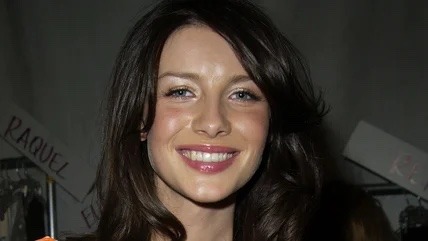
J Vespa / Getty Images
The Stunning Transformation Of Caitríona Balfe
Few shows have had as big a cultural impact as "Outlander." Based on the novels by Diana Gabaldon, the show follows a World War II nurse who finds herself transported to 17th-century Scotland when she finds magical stones in the Highlands. The show was Caitríona Balfe's big break — previously, the Irish actor had worked as a model and appeared in only a few small productions. However, since playing "Outlander's" Claire, she has become one of TV's most recognizable faces. She has also landed roles in films like "Ford v Ferrari" alongside Matt Damon and Christian Bale and Kenneth Branagh's Oscar-winning "Belfast."
With "Outlander" nearing its series finale in 2023, Balfe is looking ahead to new projects such as the upcoming "The Amateur," as the era draws to a close. It's the perfect time to reflect on her career so far. So, without further ado, here is the stunning transformation of Caitríona Balfe.
Caitríona Balfe’s upbringing in Northern Ireland colored the rest of her life
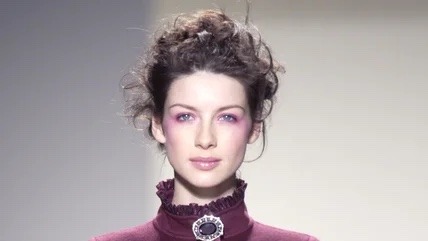
J Vespa / Getty Images
Caitríona Balfe was born in 1979 in the rural village of Tydavnet (1) near the Northern Irish border. Her upbringing in Ireland has colored her entire life. "It's such a part of the fabric of your life when you live in those areas," she told Vanity Fair in 2022. "It's really not until you get older that you look back and you realize the craziness of it, or the strangeness of it."
And by the sounds of things, it was certainly an abnormal place to grow up. Growing up so close to the border, Balfe was used to being surrounded by British soldiers and once even found herself in the middle of a bomb scare.
Her father was a garda, the national name for the Irish police force, and she was sometimes bullied for it. "Let's say being the daughter of a garda in 1980s borderland counties was not the easiest thing," she later told The Irish Times.
Caitríona Balfe was a voracious reader as a child
As a young girl, Caitríona Balfe filled most of her time with reading. In fact, when she was young, her father took away the family's TV, so instead, she looked to literature for stories and entertainment. As she told The Irish Times, she raced through the classics, including Emily Brontë, Aldous Huxley, George Orwell, and Robert Pirsig — she also was a fan of modern writers like Ian McEwan.
When Balfe reached adulthood, her love of literature continued to be a big part of her life. "You always find her on set with a book," her co-star Maria Doyle Kennedy said. "She's a ferocious reader." And, in 2019, Balfe told Stylist, "I could just lock myself away and just read for a month, which would be so lovely."
She even started her own book club on Instagram where she posts videos about what she's reading for her fans. "First rule of book club.... We read ! Then we talk..!" she wrote in one of the first posts in 2020.
Caitríona Balfe grew up wanting to act
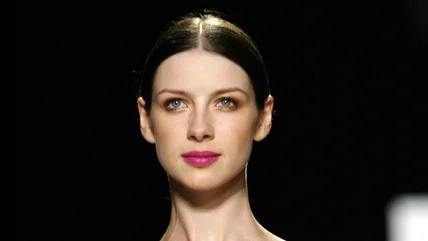
J Vespa / Getty Images
From a very young age, Caitríona Balfe knew exactly what she wanted to do with her life: acting. "It's in you, right?" she said to Backstage when asked about her first inspirations. "Like it's something you're either cursed with, you know, this need for attention and need to perform and all those things," she added, laughing.
Not only was she the fourth of seven children and therefore used to seeking out attention, she also had acting in her blood. After all, her father was something of an amateur actor himself, having appeared in a comedy troupe. "If my dad has some inclination towards it, there is probably something passed down," she mused to The Irish Times. Plus, she added, acting offered a much-needed form of escapism. "[T]here wasn't an awful lot of things to do," she said.
When she got older, Balfe pursued her passion for acting taking a course at the Dublin Institute of Technology.
Caitríona Balfe moved to Paris and began working as a model
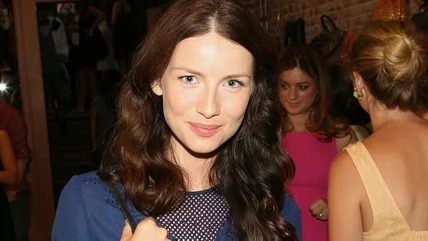
Jesse Grant / Getty Images
Before Caitríona Balfe finished her course at drama school, she was scouted by a modeling agent. "I took what I thought was going to be a year out," she told Backstage, "and I never went back. Very, very bold of me."
Balfe dove into her unexpected modeling career, setting off for Paris. "I always just wanted to travel," she explained to Vanity Fair. "Growing up, we never did that — there were too many of us. We didn't have the money."
Even though Balfe had always dreamed of acting, modeling also appealed to her innate desire to perform. As she put it, "There was something about the theatricality of the runway shows — and the event of it — that I really loved." And she was pretty good at it. She appeared in shows for all of the big designers, including Chanel, Alexander McQueen, and Valentino, and even walked the runway as a Victoria's Secret Angel. And so, for a while at least, she committed herself to a career in the modeling industry.
Caitríona Balfe moved to New York City as her relationship with modeling soured

Frazer Harrison / Getty Images
Throughout her 20s, Caitríona Balfe's modeling career careened from success to success. She modeled all over the world but eventually found herself settled down in New York City. "That's been the longest of anywhere since I left Ireland," she told Backstage in 2020. After a decade of modeling, Balfe began to crave something new. "For the last couple of years [of modeling] I was miserable, really," she confessed to Vanity Fair. "It's not exactly the nicest industry or the healthiest industry."
So, discontented with modeling, she revisited her passion for acting, first taking a few classes and later landing a tiny role as one of the "clackers" in the 2006 film "The Devil Wears Prada." "I think they just came to modeling agencies and were like, 'We need a bunch of women who can walk in heels,'" she recalled of the lucky break during an appearance on "The Hollywood Reporter's Awards Chatter" podcast. "My agency knew I wanted to act and if people would come looking for stuff, they were sending me out to a few auditions."
Caitríona Balfe moved to LA to start an acting career
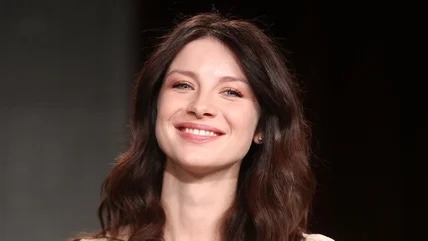
Frederick M Brown / Getty Images
When Caitríona Balfe had finally had enough of modeling, she decided to take a leap of faith into the world of acting — so, she left New York behind and set off for Los Angeles. "LA is where I came and said, 'OK, this is what I wanna do with my life,'" she said to Backstage of her first impressions. She continued taking classes — one was even a $5 class. As she told The Irish Times, "These are the weird things I did when I was wanting to be an actor in LA when I first got here."
In fact, it sounds like Balfe's early years in L.A. were filled with bold, "weird" decisions. For one thing, she only knew one person in the city when she moved. Balfe knew that moving to LA was a bit crazy — but she committed to living in a "bubble of delusion." As she put it, "I guess ultimately I was like: 'I can make this work.'"
At first, following her dream of acting wasn't easy

MJ Kim / Getty Images
Life in L.A. was anything but easy for Caitríona Balfe when she first arrived. Initially, she faced rejection after rejection. "I started from scratch. I didn't have any managers, I didn't know any agents, I hadn't acted in almost a decade," she told Backstage of her initial struggles to land work.
But even though Balfe dealt with lots of rejection, she persevered. Luckily, modeling had given her a thick skin that served her well. "In an audition, if it didn't work out, it wasn't always because you didn't do a good job, or you weren't good," she explained to The Guardian. "It was other arbitrary things like your name's not big enough. Which can also be soul-destroying, but I don't know, it's different."
Balfe did land a few roles, but they were few and far between. In 2011, she had a small role in the film "Super 8." In 2012, she landed a guest role on "The Beauty Inside" and the show "H+." In 2013, there were several films: "Crush," "Now You See Me," and "Escape Plan." Slowly, she was building a stronger CV.
Caitríona Balfe landed her big break with Outlander in 2014
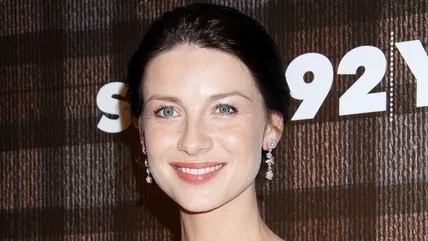
Laura Cavanaugh / Getty Images
Everything changed for Caitríona Balfe in 2014 when she landed the lead role on the much-hyped Starz show "Outlander." "It was a total crapshoot," Balfe later recalled of the audition for the show while speaking to The Guardian. "I had done a few jobs, nothing of note really. I was living in LA and I was really struggling, actually, it was about four or five months since I'd had a job."
At the time, she didn't realize how big the book series was. "I wasn't even aware of the book series when I got the first audition," she said to Vogue. "Apparently, they had been searching for [Claire] for a very long time."
Balfe landed the role when she was about to head off on a holiday in India. Because her career was going slowly in LA, she decided to leap headfirst into a new life, filming in Scotland. "I didn't realize I'd still be there almost eight and a half years later," she later admitted to The Guardian.
Caitríona Balfe shot to fame almost instantly afterward
Almost as soon as "Outlander" came out, Caitríona Balfe became one of TV's biggest names. Ronald D. Moore, who developed "Outlander," had warned Balfe about just how life-changing the role would be. "I walked her to the elevator, and just before the doors closed on her, I said, 'Your life is about to change forever,'" he said to Backstage, recalling the day she was cast. "And she gave me a grin that was both thrilled and slightly nervous. I never saw her hesitate after that."
The first episode premiered at Comic Con. "It was insane," she told Vogue. Soon enough, she began to notice her fame growing. As she told Backstage, she had only a few hundred followers on Twitter before playing Claire. "Within about a month or two, it was thousands of people — and my phone, I didn't know how to turn off the alerts, so it was just going all the time," she said. That's when she realized just how big she was becoming.
Caitríona Balfe became lifelong friends with her co-star Sam Heughan

Ethan Miller / Getty Images
Fame wasn't the only life-changing thing to come from her role in "Outlander" — Caitríona Balfe also gained a lifelong friend in Sam Heughan, her co-star. As Balfe explained to Parade, the pair made a conscious decision to become friends before filming even began. "We were just talking about it and we were like, 'Who knows what this is going to be?'" she recalled. The pair agreed to "have each other's backs." She added, "[W]e've done that from day one."
Since then, the pair have only become closer. In fact, during ATX TV's Women of "Outlander" panel, Balfe explained that she and Heughan have never even argued — although they have bickered. Heughan chimed in: "As our lives have gotten more complicated and busy, we may not see each other as much as we used to, but that core and that friendship and that base that we have has never changed." How adorable is that?
Caitríona Balfe landed a number of big roles in the 2010s
As Caitríona Balfe's fame grew in the wake of "Outlander," she landed more big roles in Hollywood — and worked with bigger and bigger stars.
In 2016, she landed a role in Jodie Foster's all-star film "Money Monster" — her co-stars included George Clooney, Julia Roberts, Dominic West, and Giancarlo Esposito. Sadly, Balfe didn't get to work with them too much as most of her scenes were filmed in front of a green screen. Nevertheless, she was starstruck to be working with Roberts. "I couldn't stop staring at her during our first read-through," she told W Magazine.
In 2019, she played Mollie Miles, the wife of Christian Bale's character, in "Ford v Ferrari." Matt Damon also starred in the film. "I walked into that film with the idea that I was gonna be very intimidated by both him and Matt [Damon]," she told Collider. But she was pleasantly surprised. "Immediately, when you meet both of them [and] the first thing that struck me about both of them is that they're just these great, humble family men. There was no ego or bravado. It was lovely."
Caitríona Balfe starred in Kenneth Branagh's Belfast in 2021
Caitríona Balfe landed a huge role in Kenneth Branagh's "Belfast" in 2021, playing Ma, the mother figure in Branagh's semi-autobiographical tale about the Troubles in Ireland. For Balfe, the role was particularly meaningful — after years of acting in Scotland, "Belfast" was much closer to home for the Irish actor. "As an Irish person, you read so many of these scripts about the Troubles, and they all have this romantic version of the violence," Balfe told Vanity Fair. "Belfast," she explained, was different.
In fact, Balfe even saw her own family in the script. "Even though this is very much Ken's story, there's a universality to it that allows you to see your own," she told The Scotsman. "I definitely thought of my own mother in playing Ma."
Clearly, Balfe was extremely proud of the film. It was a huge hit and quickly generated awards buzz. However, Balfe remained characteristically humble. "I'm just happy that it's turned out as beautifully as it has and that it's getting the recognition it deserves because it's shot so beautifully and the hard work and heart and soul that went into making it are second to none," she said.
Caitríona Balfe had her first child in 2021
Caitríona Balfe began dating music producer (2) Tony McGill in 2015 (3). The pair married in 2019, and in 2021, they had their first child. Naturally, having a child gave Balfe a new set of priorities. Even though rumors circulated that she'd be nominated for an Oscar for her role in "Belfast," she found her self preoccupied with her new son. "Luckily, I'm doing a lot of that [changing nappies], so I'm actually not thinking about the awards too much: It's more, 'Stop peeing on me!'" she joked to The Guardian.
However, having a child also brought out Balfe's protective side — especially when she found out that a small group of fans online were convinced that her child was actually the product of an imagined affair with her "Outlander" co-star Sam Heughan. "I don't want those crazies — because that's what they are — I just don't want them talking about [my son]," she told Vanity Fair. Apparently, that's why she and McGill have kept their son's name private.
Caitríona Balfe is preparing to say goodbye to Outlander

Mike Marsland / Getty Images
In 2023, Starz announced that "Outlander" would be coming to an end after its eighth season. After the WGA and SAG-AFTRA writer/actor strikes, filming for the final season was delayed. However, Balfe has already begun to mourn the end of the show that gave her her big break.
"Sam and I were doing a video for this season and I started to get emotional already," she told the Express. "It's going to be so weird. It's been such an amazing ride that it's nice to wrap it up while we all still love each other and we are all still feeling like we're making a good show."
Even though "Outlander" may be ending, we can't help but feel that Balfe's career is only just beginning. In fact, she's already set to appear in the film "Amateur" (4) in 2024 alongside Rami Malek, Rachel Brosnahan, and Laurence Fishburne. We can't wait to see what else she does next.
The List
Errors that caught Brian’s attention: (1) Dublin (2) artist/band manager (3) 2014 (4) First paragraph says “The Amateur,” as Malek has and IMDb did. Who knows? 🤷🏻♂️ The first promo art will tell us. 🍿
Remember… I walked her to the elevator, and just before the doors closed on her, I said, “Your life is about to change forever.” — Ronald D Moore
Cut & Paste journalism 🤦🏻♂️
54 notes
·
View notes
Text
Holy Ground
Taylor has described Holy Ground as reminiscing on a past relationship, which the final is. The draft lyrics in the Lover Journal do not refer to it as a past relationship however, that was added later. The album arrangement of Holy Ground is upbeat, fast tempo, with State of Grace it was part of the anthemic opening of the Red Tour. In the 2019 BBC Live Lounge which was recorded in NY Taylor played it slow and sad:
youtube
Red Secret Message "When you came to the show in SD"
The Secret Message for Holy Ground is "When you came to the show in SD." Which may be Saint-Denis, the district and canal in Paris very close to Le Zenith which Taylor played on 17 March 2011.

They had the opportunity to meet when One Direction and Taylor were both in LA in 25-30 January 2011. This may be the referred to "first glance". Begin again shows them texting each other. From then until the 16 March they toured different countries.
One Direction had a 3 day weekend 16 - 19 March. Harry left Brighton the morning of 17 March. Taylor was in Paris on the 16, 17 and 18 March. Taylor then went to Madrid and Harry re-appeared at the O2 on 19 March. Thank you @cntfightmydemonsthyknowhowtoswim for these links.
This was the first show on the Speak Now Tour that Taylor played Fearless and Train's "Soul Sister" in a mash up, which appeared on/off for the rest of the tour. Soul Sister was Harry's X-Factor audition song.
They were then both in London and on Wednesday 23 March Taylor wore a white dress similar to the cover of Begin Again. Taylor was in London many times for the rest of the year
What about San Diego?
People have theorised that SD is her show in San Diego on 20 October 2011, suggestion Joe Jonas attended, however he was in Paris on that date. One Direction did have time off then though.
Why Paris?
Paris features in the music videos for Begin Again, Everything has Changed, Falling, Paris Lyric video and the Love on Tour Images for What Makes you Beautiful.

What Taylor said about the song
In the Red album talk Taylor said she wrote the song about a past relationship and appreciated the relationship for what it was. Of note, she pauses *a lot*, like 6 times in 10 seconds, and pinches her hands, in the part where she says it was a past relationship.
Taylor said she wrote Holy Ground after seeing the muse in February 2012. In January, she had been 'holidaying' in London (having spent months there the year before) being papped walking alone. She left London the same day as One Direction, 27 January, ahead of Harry's 18th birthday 1 February 2012. See 2011 timeline. More thanks to @cntfightmydemonsthyknowhowtoswim
She speaks with no pauses once she talks about the production. She mentioned Jeff Bhasker, who worked on the song and went on to be one of Harry's main collaborators.
Lover Journal
Taylor also shared a Lover Journal (book 3) entry for March 16 2011, where in Paris, she said "My life is so beautiful right now. Every once in a while I have to remind myself to breathe and take in the view", later a Lyric in Paris and something Harry said on the Jonathan Ross show 16 November 2013.
The original lyrics to Holy Ground are on the next page (dated "February 2012", and not yet complete) with Love Story on the adjacent page. These February 2012 Lyrics are quite different, "Back when" and the last verses with "dust on every page" are missing, it is reminiscing, but not after a break up. It is likely the song was further developed when recorded mid-year and their relationship changed.


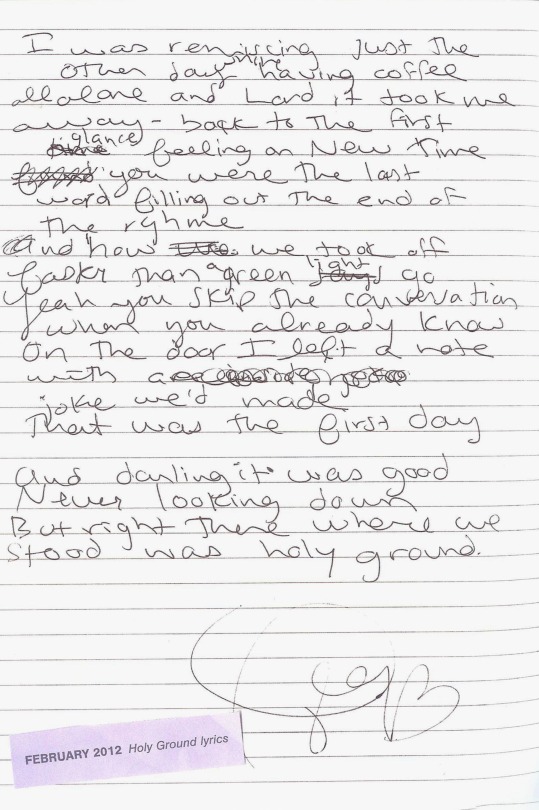
Live Performances
Holy Ground was on the Red Tour setlist and then only played a handful of times:
30 June 2015 - 1989 Surprise Song in Dublin, followed a Clean speech:
Everyone here tonight has [...] things that haunt them. [...]. Memories you wish you didn’t have. Memories you wish you could forget. [...] whether you lost someone you never thought you’d lose or you lost yourself. Or you fell in love with a person or a habit that was bad for you, and you couldn’t quit. [...].
22 October 2016 - her only live show of 15 songs that year, played between Style and an Enchanted/Wildest Dreams mashup. Harry and Taylor had been in New York.
22 May 2018 - Reputation Surprise Song in Seattle, first show after their anniversary.
29 August 2019 - BBC Live Lounge recorded in NY (above) one of 6 songs. Harry was in London, on the 19th he lost the Rose Ring.
27 May 2023 - Eras Surprise Song, NJ, in a green dress with False God. "I feel pretty good about this song for tonight, it's called Holy Ground". It also replaced EHC in the recorded Red intro when the Joe Break up was announced in April 2023.
Lyrics
I was reminiscing just the other day
While having coffee all alone, and Lord, it took me away
Back to a first glance feeling on New York time
Back when you fit my poems like a perfect rhyme
The first verse includes drinking coffee alone, coffee being a theme. Here Taylor drinks coffee alone, similar to Is it over now? “let's fast forward to 300 takeout coffees later" it is post-break up. This is in the original lyrics, but separated by distance.
The second half remembers a brief meeting and includes that Taylor and her muse travel a lot and share a love of poetry and rhyme.
The original lyrics differ here, importantly "back when" is missing, the relationship was still current and Taylor felt completed by the person. It was "Back to the first glance feeling on new time, you were the last word filling out the end of the rhyme"
Took off faster than a green light, go
Yeah, you skip the conversation when you already know
I left a note on the door with a joke we'd made
And that was the first day
This second verse hits themes in Haylor songs of how quickly they fit:
Lover "Have I known you for 20 seconds or 20 Years"
Labyrinth "Never trust it if it rises fast / It can't last"
Message In A Bottle: But time moves faster, replaying your laughter, disaster
You Are In Love: Time moved too fast, you play it back
Coney Island: The fast times, the bright lights, the merry go
Also skipping conversation is a theme of not communicating
The note on the door is visualised as a piece of paper on a hotel door in the lyric video. It reminds me of The Very First Night's "Didn't read the note on the Polaroid picture". This lyric also reminds me of Begin Again "I think it's strange that you think I'm funny, 'cause He never did"

And darling, it was good
Never looking down
And right there where we stood
Was holy ground
The Chorus is the end of the February 2012 lyrics. "Holy" ground has always confused me, but I think the clue is in the secret message, it was "Saint" Denis.
Down is in a lot of songs, this is just some:
Come Back... Be Here "And now that I can put this down"
IKYWT "'Til you put me down, oh"
Style "And when we go crashing down, we come back every time"
IWYW "We're a crooked love in a straight line down"
Wonderland "Took a wrong turn and we / Fell down a rabbit hole."
Spinning like a girl in a brand new dress
We had this big wide city all to ourselves
We blocked the noise with the sound of 'I need you'
And for the first time I had something to lose
tee hee Dress: "Only bought this dress so you could take it off"
Question…?: Good girl, sad boy, big city, wrong choices
Need is in:
Come Back… Be Here: I guess you’re in New York today, I don’t wanna need you this way
This Love: When you’re young you just run but you come back to what you need
New Romantics: We need love, but all we want is danger
End Game: I’m one call away whenever you need me
Don’t Blame Me: Shaking, pacing, I just need you
Need "Oh, It's a need, it's a need I would go anywhere that you lead"
And I guess we fell apart in the usual way
And the story's got dust on every page
But sometimes I wonder how you think about it now
And I see your face in every crowd
This verse is clear the relationship has ended, but was added after February 2012. Fell apart is also in:
The Very First Night: Back then we didn’t know we were built to fall apart
Out Of The Woods: "We were built to fall apart, then fall back together"
Taylor has also made the story/page reference is a theme in many songs
New Year’s Day: "Don’t read the last page, but I stay"
Death By A Thousand Cuts: "But if the story’s over, why am I still writing pages?"
Paris: "Privacy sign on the door and on my page and on the whole world"
Tonight I'm gonna dance
For all that we've been through
But I don't wanna dance
If I'm not dancing with you
There is a lot of dancing in Haylor songs:
22: Everything will be all right if we just keep dancing like we’re 22
The Very First Night: Danced in the kitchen, chased me down through the hallway
Out Of The Woods: To move the furniture so we could dance, baby, like we stood a chance
You Are In Love: You two are dancing in a snow globe 'round and 'round
Dancing With Our Hands Tied: If I could dance with you again
Cardigan: I knew you, dancing in your Levi’s, drunk under a streetlight
Cowboy Like Me: And you asked me to dance, but I said, “Dancing is a dangerous game”
Maroon: And I chose you, the one I was dancing with in New York, no shoes
Glitch: I thought we had no chance and that’s romance, let’s dance
and bonus Dancing, after this she learned to Dance alone:
Shake It Off: I’m dancing on my own, I make the moves up as I go
New Romantics: We are too busy dancing to get knocked off our feet
20 notes
·
View notes
Text
Michael Sheen: ‘I find it very hard to accept actors playing Welsh characters when they aren’t Welsh’
Has he taken the concept of authentic casting to a whole new level? Ahead of his latest BBC drama Best Interests, the star explains all
Michael Sheen has had it with the Prince of Wales. Not the man, but the title. “I think it’s ridiculous,” he says. “It’s just silly. I see no reason why the title should continue. Certainly not with someone who’s not Welsh.”
“That’s not the majority view,” he adds, with resignation. “So, whatever the majority of people want, I’m sure will continue.”
The star of Frost/Nixon and proud son of Port Talbot is chatting via video from a bucolic spot close to his hometown (a deer has just wandered into view), but even at a distance, it’s not hard
to see that Sheen is a man ofstrong convictions.
He has spoken in the past about the opportunity to retire the title after the death of Elizabeth II, as a gesture to “put some of the wrongs of the past right”. In 2020, he returned the OBE he was “honoured” to have received in 2009 when he felt it would make him a hypocrite to give a lecture about how the English king Edward I “put a stranglehold on Wales” at the turn of the 14th century.
When we chat, he’s about to begin shooting his TV directing debut The Way – co-created with playwright James Graham and documentary-maker Adam Curtis, about a family caught in a civil uprising, set in and around Port Talbot. The BBC project is the first from the production company that he set up with Sherlock producer Bethan Jones to focus on telling Welsh stories because, “You can shout about how bad it is, but if you want to see something be different then do it, you know?”
The 54-year-old is one of the actors of his generation, a stage star in his twenties (The Telegraph’s Charles Spencer called him “outrageously charismatic”) who went on to create unforgettable screen portraits of Tony Blair (The Queen, The Deal), Chris Tarrant (Quiz) and Brian Clough (The Damned United), alongside his David Frost in Peter Morgan’s play and film about the 1977 interviews that brought down the US president. Recently, Sheen has gained a whole new tranche of fans playing a very arch angel opposite David Tennant’s insouciant demon in Amazon’s Good Omens – not technically gay characters according to the Terry Pratchett-Neil Gaiman source novel, but seemingly in love.
Tennant and he have a natural chemistry on and off screen, Sheen says, adding that “he stops me being too grumpy”. He is a little on the grumpy side. In one exchange, in which I suggest he is a supporter of Welsh independence, he responds hotly: “Show me where it says that. I don’t believe I’ve ever said that.” Sam Mendes compared Sheen to fellow Welsh stars Anthony Hopkins and Richard Burton – “fiery, mercurial, unpredictable”.
But he shares a warm screen chemistry with Sharon Horgan in Jack Thorne’s moving new four-part drama Best Interests. They play the parents of a child with cerebral palsy, the adorable Marnie (played by Dublin actor Niamh Moriarty), who suffers a seizure that leaves her without brain function. The couple find themselves on opposite sides of an unbearable decision: whether or not to switch off their daughter’s life support. Very few will make it through the drama without tears, but the issues it raises will be familiar to all who have followed recent legal battles over 12-year-old Archie Battersbee and baby Alfie Evans.
Best Interests is “heartbreaking” at times, he admits, which makes the humour that he and Horgan bring to it all the more important. They hadn’t worked together before. “That relationship had to do a lot of heavy lifting. Sharon and I didn’t know each other very well … but straight from the off, we had a very similar sense of humour and made each other laugh.” Moriarty’s is a break-out performance – one scene involving make-up beautifully captures the parent-child relationship. She has cerebral palsy that affects her legs, a condition called spastic diplegia, but she’s not the only disabled actor in the piece.
Bafta-winner Lenny Rush, 14, who in real-life has a condition that affects his growth, is brilliant as George, who sets his cap at Marnie. Mat Fraser, who plays a legal advocate in Best Interests and portrayed Shakespeare’s Richard III in 2017, has a thalidomide impairment, which likely gave him an insight into Richard’s sense of “my deformity”.
Thorne, who experienced a chronic medical condition in his twenties, has said in the past that disabled people have been “utterly and totally” failed by the TV industry. In Best Interests, one parent of a child with a disability states baldly that people “hate” disabled people. “I think people can feel very uncomfortable around people with disabilities,” Sheen says. “A lot of the time it’s just to do with ignorance about, ‘Oh gosh, I don’t know, what should I do?’ It can make interaction quite awkward at times, and it can bring out people’s fears.”
The fact that there were several people with disabilities working on the project, he says, was striking because it brought home how rarely he had seen it before. It leads into a discussion of how far actors can credibly play identities they don’t personally inhabit. Sheen has thought about it: “You know, seeing people playing Welsh characters who are not Welsh, I find, it’s very hard for me to accept that. Not particularly on a point of principle, but just knowing that that’s not the case.
“That’s a very different end of the spectrum, but a part like Richard III is such a great character to play, it would be sad to think that that character, you know, is no longer available or appropriate for actors to play who don’t have disabilities, but that’s because I’m just not used to it yet, I suppose. Because I fully accept that I’m
not going to be playing Othello any time soon.
“Again, it’s not particularly a point of principle, but personally, I haven’t seen many actors who have come from quite privileged backgrounds being particularly compelling as people from working-class backgrounds. If you haven’t experienced something, you know, the extreme example is, well, if you haven’t murdered someone, can you play a murderer?”
In 2021, it was reported that Sheen intended to be a “not-for-profit” actor, after selling his own properties to ensure the Homeless World Cup that he had organised in Cardiff in 2019 went ahead when funders withdrew. So, what is a not-for-profit actor?
“There’s no such thing,” he says. “In that interview, I talked about how the ideal I was aiming towards was working like a not-for-profit company. When I put the money into the Homeless World Cup, since then I only owe money, so in terms of profits, there are no profits. I put as much of the money I make as I possibly can into
either funding and supporting what other people are doing
that I believe in, or starting up projects myself.”
It’s a measure of Sheen’s confidence that he knows the parts will keep coming. He has become a father again in his 50s; he and his partner, 28-year-old Swedish actor Anna Lundberg, have two young daughters. “My knees creak a lot more,” he says. “It’s a lot harder to get up and down off the floor when you’re playing with the baby.”
Sheen also has a grown-up daughter, Lily Mo Sheen, 24, from an earlier relationship with British actress Kate Beckinsale. “When my eldest daughter was born, I was still trying to make my way in my career and having to make harder choices about whether to work away from home and how much time to be away and all that stuff,” he says. “This time around, that’s not as difficult as I’m more established as an actor. Physically, it’s hard. But the one thing that is always the same is, you know, poo doesn’t smell any better.”

#Michael Sheen#Interview#Best Interests#the joys of fatherhood#you can feel his enthusiasm#I'm not sure this interview will help him to promote his future projects
47 notes
·
View notes
Text
He arrives from deepest Eastern Europe, carrying the soil of his homeland with him. He is an immigrant who must adapt to a new society and is very self-conscious about speaking English with a very thick accent. He has a dark complexion; his nose is hooked; he has massive and conspicuously bushy eyebrows and pointy ears; and he stands slightly stooped and hunched. He is clad in black from head to foot and he wears distinctive clothes, including a six-starred Magen David-like medallion, that set him apart from everyone else.
He remains proudly loyal to an alien tribe, the smallest of minorities, and though subject to intense persecution throughout his existence, he has remained steadfast through many centuries in his dedication to ensuring the survival of his race. He communicates with his followers through a mysterious code and a language unknown to others and, unlike everyone else on earth, his day begins at sundown. Not only is he unable to eat the same food as everyone else, his food preparation rite includes draining the animal upon which he feeds of every last drop of blood, and he also practices rituals that involve drinking a red-colored liquid. He is not only non-Christian, but he is physically and emotionally repelled by the mere sight of a Christian cross. Haters characterize him as evil, a capitalist bloodsucker, a person feeding on the social vigor of Europe, and as a general threat to contemporary civil society.
Is this an antisemitic description of a European Jew . . . or a description of Count Dracula?
Actually: both. As discussed below, that is no mere coincidence because Dracula represents the convergence of prevailing stereotypes of both Jews and vampires.
Abraham Stoker (1847-1912) – better known as “Bram” – was an Irish author who is best known for his 1897 Gothic horror novel, Dracula, which went on to become one of the most well-known works in English literature and which has been adapted in hundreds of films, television productions, video games, animated cartoons, comic books and dramas. It has been translated into 30 languages and, since its publication, it has never been out of print.
Stoker became interested in the theatre while a student and, while working for the Irish Civil Service, he became the theatre critic for the Dublin Evening Mail, which was co-owned by Sheridan Le Fanu, an author of Gothic tales who may have engendered his interest in such stories. Stoker produced over a hundred pages of notes for Dracula, drawing extensively from Transylvanian folklore, and many critics suggest that his vampire character was inspired by various historical figures, including particularly the infamous Vlad the Impaler. Interestingly, though he traveled the world, he never actually visited Eastern Europe or Transylvania, where his seminal novel is set.
Of particular Jewish interest is that before writing Dracula, Stoker met and befriended Ármin Vámbéry (1832-1913), a renowned Hungarian-Jewish Orientalist and foundational figure in Hungarology. Many commentators argue that Dracula likely emerged from Vámbéry’s dark and moody stories of the Carpathian mountains and, in fact, Stoker claimed him as his consultant and credited him as a primary source of Balkan folklore. Some authorities further argue that the character of Professor Van Helsing, Stoker’s vampire hunter, was based on Vámbéry; in the novel, Stoker has Van Helsing refer to his “friend Arminius, of Buda-Pesth University,” where Vámbéry was a professor. Although Arminius is not a character in the novel, his influence upon Van Helsing is crucial to the ultimate defeat of Dracula.
Born Hermann Bamberger in Szent-György, Kingdom of Hungary into an impoverished Orthodox Jewish family, he eventually converted to Islam – and later to Protestant Christianity, probably to facilitate appointment to the faculty of the University of Budapest – and changed his name to Ármin Vámbéry. His father, a rabbi, died of cholera in his youth and, in a radical move disapproved of by the Jewish community, his remarried mother, believing that a secular education was key to upward social mobility in the non-Jewish world, transferred him from a yeshiva to a Catholic school – where his second-grade teacher taunted him with “Well, `Moshele,’ why do you study? Would it not be better for you to become a kosher butcher?” – and then to a Protestant school in Pressburg.
However, unable to support him and his siblings, his mother set him adrift at age 12 to fend for himself and, lame from tuberculosis, he was forced to serve an apprenticeship with a tailor and later as a tutor. However, he manifested an extraordinary talent for languages and, by age 16, he had become fluent in Hungarian, Hebrew, Latin, French and German, and was somewhat knowledgeable in English, Russian, Serbian, and other Slavic languages as he commenced his career as a writer.
After spending about a year in Constantinople, Vámbéry published a German-Turkish dictionary (1858). After years as a pioneering traveler of Central Asia in the double guise of a Turkish effendi disguised as a Sunni dervish, he published Travels in Central Asia (1865), which made him an internationally renowned writer and celebrity, and he was appointed professor of Oriental languages at the University of Budapest (1865) (to which Stoker refers in Dracula).
Vámbéry notably served as a trusted consultant on diplomatic work in the Ottoman Empire to no less a personage than Theodor Herzl and, among other things, used his connections in the Ottoman Empire to introduce Herzl to Sultan Abdul-Hamid in 1901. Although he did play perhaps the leading role in enabling Herzl to argue his case for Zionism directly to the Sultan, he did not share the Zionist leader’s optimism regarding the outcome of the meeting (and he proved correct). As Herzl wrote in his diary, Vámbéry admonished him:
[do not] talk to [the Sultan] about Zionism. That is a phantasmagoria. Jerusalem is as holy to him as Mecca. Nevertheless, Zionism is good – against Christendom. I want to keep Zionism alive – and that is why I have secured the audience for you, as otherwise you would not be able to face your Congress. You must gain time and carry on Zionism somehow.
In his published diaries, Herzl also documented his relationship with Vámbéry and, with great affection, describes him thus:
Vámbéry doesn’t know whether he is more Turk than Englishman, writes books in German, speaks twelve languages with equal mastery, and has professed five religions, in two of which he has served as a priest . . . He told me 1001 tales of the Orient, of his intimacy with the sultan, etc. He immediately trusted me completely and told me, under oath of secrecy, that he was a secret agent of Turkey and of England.
Notwithstanding his apostasy, Vámbéry argued for the right of believing Jews – which he definitionally limited to the Orthodox – to retain their way of life and, after Herzl’s death, his counsel was actively solicited by David Wolfssohn. Some critics note that Vámbéry never publicly embraced Zionism and that, as a convert to Islam, he certainly would have at least embraced the Muslim belief that Jews were better off under benevolent Muslim rule. However, Herzl’s diary entries and the esteem with which he was held by Zionist leadership would seem to belie the argument that he wasn’t at least sympathetic to the Zionist cause.

The first film adaptation of Dracula, and arguably its most famous, was F. W. Murnau‘s Nosferatu, A Symphony of Horror (1922), with Max Schreck starring as the vampire Count Orlok. [Ironically, “Shrek” – which was the actor’s real name – means “fright” in German and Yiddish.] Stoker’s widow, Florence, sued the filmmakers, alleging that her approval had never even been sought, let alone granted; maintaining that she had not been paid any royalties; and demanding that all negatives and prints of the unauthorized film be destroyed. When the lawsuit was finally resolved in her favor three years later, only a single print of the film had survived, but it had broad distribution as contraband and has survived to become one of the most important films of all time. The first authorized film version of Dracula did not make an appearance until almost ten years later when Universal Studios released Tod Browning‘s Dracula (1931) starring Bela Lugosi, which became known as perhaps the definitive Dracula film.
Interestingly, in Nosferatu, a manuscript page that is shown in passing displays mystical symbols on it, including a six-pointed star evocative of a Magen David and what may possibly be a few Hebrew letters (amid dozens of other signs) and, in the Lugosi film, the vampire also wears what appears to be a Magen David. This became an amusing issue in 1987 when General Mills, in response to complaints by Jewish media, agreed to redesign cereal boxes for its Count Chocula breakfast food to remove the same six-pointed medallion.

Moreover, the cast of Nosferatu included several Jewish actors, including Alexander Granach, the foremost Jewish actor in Berlin, who played Knock, the vampire’s henchman. Granach plays his character as the ultimate antisemitic stereotype, a cackling, grasping, bushy-eyebrowed money-grubber. He later fled Germany when Hitler rose to power, ultimately settling in Hollywood, where he became a successful actor in American films, often playing Nazis. Albin Grau, a student of the occult and a graphic artist who produced, designed, and marketed the film, was not Jewish, but he was nonetheless arrested, charged with being a socialist, and murdered by the Nazis at Buchenwald.
Nosferatu became a leading source of Nazi propaganda. Julius Streicher, who would become the founder and publisher of Der Stürmer, the great organ of Nazi antisemitism, attended the film’s premiere in 1922 and quickly began featuring articles discussing parallels between Jews and vampires. In Mein Kampf, Hitler repeatedly refers to Jews as vampires and bloodsuckers.
Given the literally hundreds of versions of the original novel – including particularly Nosferatu, whose plot differs dramatically from Stoker’s original narrative – it is worthwhile to summarize here Stoker’s original story. For example, in Stoker’s novel, sunlight merely weakens Dracula, but it was Galeen in Nosferatu who first came up with the idea that sunlight evaporates a vampire and turns him into dust or wisps of smoke, which has become a universal theme in virtually all successor vampire stories
Stoker’s novel begins with Jonathan Harker, a newly qualified English solicitor, visiting Count Dracula at his castle in the Carpathian Mountains to help him purchase a house near London. Paying no attention to the Count’s stern warning, he wanders the castle at night and encounters three vampire women, but he is saved by Dracula, who gives the women a small child bound inside a bag. When Harker awakens the next morning and finds that the Count has abandoned him to the three vampires, he escapes and ends up delirious in a Budapest hospital. Meanwhile, Dracula has sailed on a ship to England with boxes of earth from his castle. Meanwhile, the captain’s log reflects the disappearance of the entire crew, until he alone remains, and when the ship finally docks at Whitby, a large dog is seen leaping ashore.
Lucy Westenra writes a letter to Mina Murray, Harker’s fiancée, about her acceptance of Arthur Holmwood’s marriage proposal. Dracula stalks Lucy and, after she hosts Mina at Whitby, she begins sleepwalking. When Mina receives a letter about her missing fiancé’s illness and goes to Budapest to care for him, Lucy becomes very ill. Professor Abraham Van Helsing determines that Lucy has been bitten by a vampire but, refusing to divulge the truth, he diagnoses her with acute blood loss. He places garlic flowers around her room and makes her a necklace of them but Lucy’s mother, unaware that garlic repels vampires, removes them, after which they are terrified by a wolf. The mother dies of a heart attack, with Lucy’s death following soon after.
After her burial, newspapers report that children are being stalked in the night by a beautiful woman and, when Van Helsing figures out it is Lucy, he takes a small group to her tomb, disinters her, drives a stake through her heart, beheads her, and fills her mouth with garlic. Harker and his now-wife Mina return, join the hunt for Dracula, and are advised by Van Helsing that vampires can only rest during the day on earth from their homeland.
Dracula secretly attacks Mina three times, drinking her blood each time, and he forces her to drink his blood on the final visit, the result of which is that she will be turned into a vampire after her death unless Dracula is killed. When the vampire hunters find Dracula’s English properties, they discover many earthen boxes within and they open each of the boxes; deposit blessed wafers of sacramental bread inside them, rendering them useless to Dracula; and reseal them. When they learn that Dracula is fleeing to his Transylvanian castle with his last box in tow, Van Helsing uses hypnosis to exploit Mina’s psychic connection to the count to track the vampire’s movements.
In Romania, the hunters split up, with Van Helsing and Mina going to Dracula’s castle, where they destroy the vampire women; Harker and Holmwood follow the Count’s boat on the river; and two others parallel them on land. When the hunters see Dracula’s box being loaded onto a wagon, they converge and attack it and, after they slash Dracula’s neck and drive a stake through his heart, he crumbles to dust and Mina is freed. (In some later versions of the story, Mina becomes a vampire and is killed through impalement.)
While Jewish villains are plentiful in gothic literature of the time, few appear in vampire stories. Nonetheless, critics have published many works claiming not only that Stoker’s inspiration for Dracula had Jewish origins, as described above, but also that antisemitism underscores the entire novel. However, for all the subtexts of the novel that have become fodder for the academics, Dracula himself is certainly not Jewish and there are actually only two explicit references to Jews in the novel.
First, trying to track down Dracula’s possessions, the vampire hunters discover that one item was received by German Jew Immanuel Hildesheim, whom Stoker describes as a “Hebrew of rather the Adelphi Theatre type, with a nose like a sheep, and a fez.” Thus, the only named person whose assistance Dracula enlists in escaping from London is a German Jew, who requires a bribe to help capture Dracula.
Second, after Dracula shipped 50 boxes of ordinary soil to London, one of the transporters, when asked about the strange cargo, responds in a working-class accent: “. . . There was dust that thick in the place you might have slep’ on it without ‘urtin’ of yer bones; an’ the place was that neglected that yer might ‘ave smelled ole Jerusalem in it.” Thus, the odor emanating out of the cargo was not any ordinary smell but, rather, a Jewish smell, feeding popular antisemitic views of Jews as being unsanitary.
While never identified as a Jew, Dracula – and vampires more generally – encompassed a variety of antisemitic stereotypes including, as described in the introduction to this article, being rootless and strange foreigners of East European origin, dark-complected, and lustful for the money and blood of others. Moreover, the mythology of the vampire has historically been closely linked to the Blood Libel slander, pursuant to which Jews are accused of using the blood of Christian children to prepare their Passover matzot, and Stoker frequently evokes the Blood Libel, including particularly in one scene where he has Dracula bring a child to feed his vampire wives. Significantly, the vampire hunters ultimately succeed in destroying Dracula using specifically Christian elements: crucifixes, holy water and wafer hosts as their weapons, which are the tools Christians claim to have used to “redeem” Jewish souls during the Crusades.
Furthermore, in the last two decades of the 19th century, the number of Jews living in England had increased more than sixfold because of pogroms and antisemitic laws enacted elsewhere, and there were widespread fears regarding foreign contagion and anxieties regarding the “dangers” presented by the veritable flood of Yiddish-speaking immigrants to Britain. By feeding off upstanding English citizens, Stoker’s Dracula maintains the survival of his race, just as Jews newly arrived in Great Britain sustain themselves by usurping money and wealth through devious means, leaving their victims” dry.”
As such, whether intentionally or incidentally, whether he was an antisemite or merely reflected the ethos of his time, Stoker played on these anxieties – notably, one critic at the time describes Dracula’s schemes to further his undead bloodline as an attempt to “Judaize” Great Britain – and, by characterizing Dracula as raising loyal only to his own people in Transylvania, he similarly exacerbated public xenophobia and anxiety over Jewish “dual loyalty.”
#dracula#dracula daily#count dracula#jonathan harker#mina harker#armin vambery#van helsing#antisemitism#just something i thought interesting
17 notes
·
View notes
Text
ANDREW SCOTT IS REDIRECTING THE CONVERSATION.
The actor, who plays the enduring queer-with-a-questionmark antihero Tom Ripley in the new Netflix series Ripley, has been doing just that in interviews as of late, and you can hardly blame him; he’s just coming off a promotional run for All of Us Strangers, a romantic fantasy film that has the real-life gay actor playing an adult gay man reliving his youth, including coming out. Scott — beloved as the “Hot Priest” from six-time Emmy winner Fleabag (Prime Video) and nominated in 2020 for an Outstanding Guest Actor turn in Netflix’s Black Mirror — got an avalanche of accolades for the film and, unsurprisingly, questions from reporters keen to link Scott and the character he plays. Interviews hint the Dublin-bred performer, who started acting as a kid and then matriculated through theater, may be weary with forays into identity politics, at least in relation to acting. He’s advised we retire “openly gay” as a descriptor and has likened the sometimes meandering “representation” discourse to a dead end. “It can be a cul-de-sac, certainly,” he told The Guardian. “I think transformation is as important as representation.”
He transforms in Ripley. This adaptation of Patricia Highsmith’s novels is a stylized, eight-episode noir thriller, with Scott as the titular, elusive con man. It’s true that people had a lot to say about The Talented Mr. Ripley’s queer-coded subtext almost as soon as Highsmith published it in 1955, with critics and essayists noting the homoeroticism oozing from Tom’s obsession with Dickie Greenleaf. Novelist Edmund White read Tom’s penchant for forgery as a metaphor for “passing,” as gays and lesbians of the era did to survive. Of course, cultural commentary and musings about identity have only intensified since, and that discourse nowadays can influence who gets cast and what gets made in the first place. Ripley is rendered in black and white, but black-and-white connections to Tom’s ambiguous sexual orientation, to his behavior or to Scott’s own interior life are, to this actor, the least interesting part of the story.
“I wanted to work very, very hard,” Scott tells emmy from Palm Springs, where he’s gone for a rest after sprinting through awards season. “And that involves just trying to imagine what it’s like to be this character, not play what people’s perception of what the character is. Tom has a very large brain. And watching the brain at work is what makes him such a fascinating character. Anything else, to me, is superfluous. I’m not sure he thinks about himself too much in that way.”
Scott was seduced by the writing. "The scripts were just so brilliantly economic and gripping," he says. "I thought it was a great opportunity to spend that amount of time with such a fascinating character." Steve Zaillian, who wrote, produced and directed Ripley, won an Oscar for his Schindler's List screenplay and received three Emmy nominations for HBO's The Night Of, which he cocreated, cowrote and directed, in part.
Set in the early 1960s, Ripley begins in New York and traverses a handful of Italian locales including the Amalfi Coast, Capri, Rome and Venice. Production ran from the summer of 2021 through the spring of 2022, including some of the pandemic’s most intense days, which forced cast and crew to adhere to stringent protocols. Yet the timing also meant that the citizens and tourists who ordinarily clog streets had vanished, allowing Ripley unobstructed views of Italy’s scenic vistas. As a result, Ripley has a strikingly stark feel that, combined with its blanched palette, conveys a chilly, quiet sparseness that affords full focus on Scott.
“Andrew’s transformation from a disreputable petty crook on the Lower East Side streets of New York to a sophisticated expatriate thriving in Italy is extraordinary,” Zaillian says. “Everything about him gradually changes — the way he looks and carries himself, how he behaves and speaks, how he thinks. It is a finely measured performance.”
Ripley follows Highsmith’s text almost to the letter. In the first episode, we meet Tom in the slums of New York City’s Lower East Side, where he ekes out a living by forging collection notices, stealing checks and committing petty grifts. You know the rest: Tom has a chance encounter with the wealthy father of a casual acquaintance, Dickie Greenleaf (Johnny Flynn, Genius: Einstein, Emma). Pretending to be an Ivy League grad and closer friend than he is, Tom is hired by Dickie’s dad to go to Italy and bring home Dickie, a trustafarian flitting about Europe with his girlfriend, Marge Sherwood (Dakota Fanning, The First Lady, The Alienist). Armed with a first-class ticket on an ocean liner and enough cash for six weeks, Tom finally tastes the affluence he’s always wanted, resented and believed he deserved but was never able to touch. He finds Dickie and develops an unhealthy obsession with him that eventually culminates in murder and identity theft.
It's the unsettling crime story where the bad guy not only wins but makes us complicit in his devious deeds. "What I think Patricia Highsmith does brilliantly," Scott says, "is make us root for somebody, even though they're doing something that we probably wouldn't do ourselves. He is constantly surviving. I can empathize with him, what that feels like, where he's just not being looked at. It's easy to say that someone is a monster because that moves us away from having to look at ourselves. Human beings do monstrous things to protect themselves. That's why that story has stuck around for so long."
Transforming into Tom Ripley took a toll. Even for a performer as versatile and energetic as Scott, who won a Best Supporting Actor BAFTA for playing Moriarty on Sherlock in 2012 and stunned audiences in 2023 by playing all eight parts in the Chekhov-inspired Vanya on the West End. Ripley demanded more than is typical. "What's unusual about this particular bit of television is how much time you spend with one character," he says. "A lot of the time in television, we can spend time with a hospital crew or a family or a police department, but it's unusual, I think, to spend so much time with one character over eight hours," He's in almost every frame. "I had to have an awful lot of stamina."
You really see that stamina in Ripley's fifth episode, a contained, tightly wound thriller unto itself. Scott is terrifying as he feigns innocence to Freddie Miles (Eliot Sumner), a friend of Dickie's suspects foul play. We know Freddie is doomed the moment he enters Tom's elegant Rome apartment, but it's at the end of Freddie's visit that we see Scott's endurance tested as he lugs a heavy body and makes split-second decisions to elude attention, exuding a demented, friendly calm all the while. Scott - with minimal dialogue - slithers past whatever moral walls we believe separate us from monsters.
"You have to, through his face, be able to understand what he's feeling - sometimes in absolute silence," Scott says. "You have to e able to radiate a thought, which is quite difficult when you don't have language to support you. (The audience) is not thinking, 'I hope that inspector catches him.' No. You think, 'Oh my God, hurry up! Someone's coming!' That's extraordinary considering what he's just done. That feeling of, 'What would you do?' That's what the scripts have achieved."
Ripley's hushed tension is complemented by a cinematic approach that producers don't want to call "Hitchcockian" but that whispers influences like La Dolce Vita and Nightmare Alley. Hard lines, curves, shadows, stairways and vacant passageways tease sensual danger, while meticulously curated costumes and objets d'art (including the ashtray that extinguishes poor Freddie) bathe viewers in a fully fleshed-out world of savage beauty.
"The world that Steve wanted to represent was very lonely," says production designer David Gropman, who previously worked with Zaillian on Searching for Bobby Fischer and A Civil Action. Zaillian was exacting and precise about the tone he wanted "cat and mouse," Gropman calls it. That specificity helped him execute Zaillian's vision, but having a clear brief didn't make the realization easier.
Gropman's team included three researchers, five art directors and two supervising art directors, all spread over different countries. They spent months sojourning the Italian coast to select the perfect hotels, banks, post offices and train stations. The team built facsimiles of the main train stations in Naples and Rome, as well as the Lower East Side tenement apartment where we first meet Tom. Every single object we see serves a purpose; in episode five, Tom is in a record shop purchasing a copy of "Il cielo in una stanza" by the Italian singer Mina, who vanished from the public eye in 1978 and has not been seen since - though she continues to release music. A subtle allusion to Tom's ghosting act? Perhaps. Either way, the prop is one of countless Easter eggs that nod to the time, place and sense of dark romance associated with the era.
"He cares about every detail," says Gropman, a two-time Oscar nominee. "We, by Steve's decree, weren't allowed to shoot on streets where there wasn't cobblestone. There were over 200 locations. It's the hardest thing I've ever done."
Others agree that Ripley was a difficult and intense, albeit rewarding, shoot. Flynn recalls struggling with the isolation and anxiety caused by quarantining and distancing after travel, which made seeing his wife and three children in London complicated. Scott and Fanning spent a lot of time with just each other in barren towns. They were lonely, but as number one on the call sheet and a producer, Scott took ownership and worked to take care of his team. "I was finding it really hard," Flynn admits. "He was trying to sneak me care packages. It was really sweet. He was generous and available to everybody, even though he's carrying this huge thing, which I thought was commendable." Fanning called Scott one of the loveliest people she's ever met - warm, funny and full of life. "He's the opposite of his character."
Marge is deeply suspicious of Tom from the jump, but like Tom, she has minimal dialogue. Her intuitive awareness manifests in a furrowed brow, a pursed lip and a clipped smile deployed as a mask. "There's not a lot of people in the story that are fooled by Ripley," Fanning says. "Marge knows something is off but can't quite put her finger on it. There's a lot of acting without words." She loved playing in that box, and with Scott especially. "We just dove in and went through it all together. It was such a challenge, but he couldn't have been a better person to take on this role. He's a grifter who's making you emotional."
Grifter, con man, crook, thief - Tom Ripley might deserve a lot of labels, but one Scott is reluctant to apply is "sociopath" or, for that matter, any other badge that files him in some neat category. "It was important not to diagnose the character with lazy assumptions," he says. Of course, Scott understands all the thinking about Tom's queerness; he's even thought about Highsmith's own complex relationship with her lesbianism in relation to her writing. But he says thinking too much about Tom's orientation, and any notion that it could be more pronounced in this modern take, distracts from the real power of the narrative. "Homophobia can exist sometimes through silence or people's speculating about other people's sexuality," he says. "And there's a lot of speculating about Tom. Sometimes the speculation itself is the (more) insidious thing."
As he told The Guardian, transformation can be as important as representation. And anyway, Tom's sexuality isn't what makes him alluring. It's his ambiguities. All we need to know about Tom Ripley is on the page.
"I wanted to ask questions about him without necessarily answering every single one of them clearly. He has to make stuff up on the spot for survival. He's an absolute brilliant, talented genius," Scott says. "Who is Tom Ripley? The point is we never really know."
#Ripley#Netflix#Steven Zaillian#Andrew Scott#Patricia Highsmith#The Talented Mr Ripley#Johnny Flynn#Dickie Greenleaf#Dakota Fanning#Marge Sherwood#Freddie Miles#Eliot Sumner#Emmys#Black Mirror#All of Us Strangers#Fleabag#Hot Priest#Palm Springs#BAFTA#Moriarty#Sherlock#Vanya#West End#David Gropman
4 notes
·
View notes
Text
Subculture Media's Expert Video Production & Videography in Dublin
In the bustling hub of Dublin's creative scene, Subculture Media emerges as the beacon of excellence in video production and professional videography services. With a dedication to quality, creativity, and innovation, we invite you to unleash your vision and captivate audiences with our exceptional range of services tailored to meet your every need.
At Subculture Media, we understand the power of visual storytelling. Whether you're a business looking to showcase your brand, an artist seeking to share your message, or an individual with a story to tell, our team of skilled professionals is here to bring your vision to life. From concept development to final delivery, we work tirelessly to ensure that your message resonates with clarity, impact, and authenticity.
Our video production Dublin encompass a wide range of offerings, designed to cater to the diverse needs of our clients. Whether you're in need of a corporate video, a promotional campaign, a music video, or a documentary, we have the expertise and resources to deliver results that exceed your expectations. With state-of-the-art equipment, industry-leading software, and a commitment to excellence, we transform your ideas into captivating visual masterpieces that leave a lasting impression.
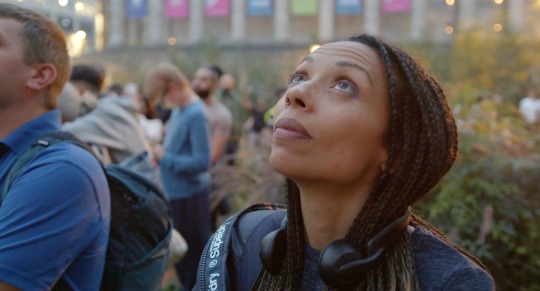
In addition to our comprehensive video production capabilities, Subculture Media is proud to offer professional videography services that set the standard for excellence in Dublin and beyond. Our team of experienced videographers combines technical expertise with artistic flair to capture every moment with precision and artistry. Whether you're hosting a corporate event, a wedding celebration, or a live performance, we have the skills and creativity to ensure that your memories are preserved in stunning detail.
What sets Subculture Media apart is our unwavering dedication to quality and customer satisfaction. We understand that your project is more than just a video – it's a reflection of your brand, your message, and your vision. That's why we take the time to listen to your needs, understand your goals, and collaborate closely with you every step of the way. From pre-production planning to post-production editing, we ensure that your project is executed flawlessly, on time, and within budget.
But don't just take our word for it – our track record speaks for itself. Over the years, we have had the privilege of working with a diverse range of clients, from local startups to global corporations, and we have earned a reputation for delivering results that surpass expectations. Whether you're looking to elevate your brand, engage your audience, or simply tell your story in a compelling way, you can trust Subculture Media to deliver exceptional results that make an impact.
So why settle for mediocre when you can achieve greatness? Unleash your vision with Subculture Media's expert video production and videographer Dublin. Contact us today to learn more about our services and schedule a consultation with one of our experienced professionals. Together, let's create visual experiences that inspire, engage, and leave a lasting impression. Subculture Media – where creativity knows no bounds, and excellence is always within reach.
0 notes
Text
Trivia - Minority Report was first optioned in 1992 as a sequel to another Philip K. Dick adaptation, Total Recall (1990), with Arnold Schwarzenegger set to reprise his role as Doug Quaid. But after the Total Recall production company filed for bankruptcy, the project was reworked into a stand-alone project and started its development in 1997, after a script by Jon Cohen reached Steven Spielberg and Tom Cruise (Wikipedia).
Colin Farrell starred in both Minority Report and Total Recall (remake).
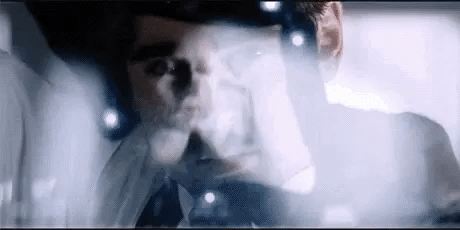
Minority Report predicted multiple future innovations, including facial recognition, personalised advertising and predictive crime fighting.
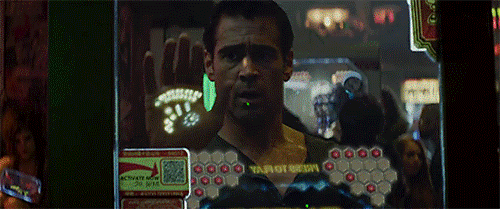
Total Recall showcased self-driving cars. Google is now making cars that can drive themselves without human intervention (I saw a preview in Google HQ in Dublin).
In 2010, the Transportation Security Administration installed total-body scanners in many U.S. airports to reveal any concealed weapons on a passenger’s body.
Also video calls (Zoom) and hologram (digital) instructors are now a reality.
#minority report#best actor#movie#ireland#colin farrell#total recall#sci fi film#futuristic#technology#google#self driving cars#sci fi#stranger than fiction#artificial intelligence#trivia
8 notes
·
View notes
Text
Three Times Out (Hugh Lane)
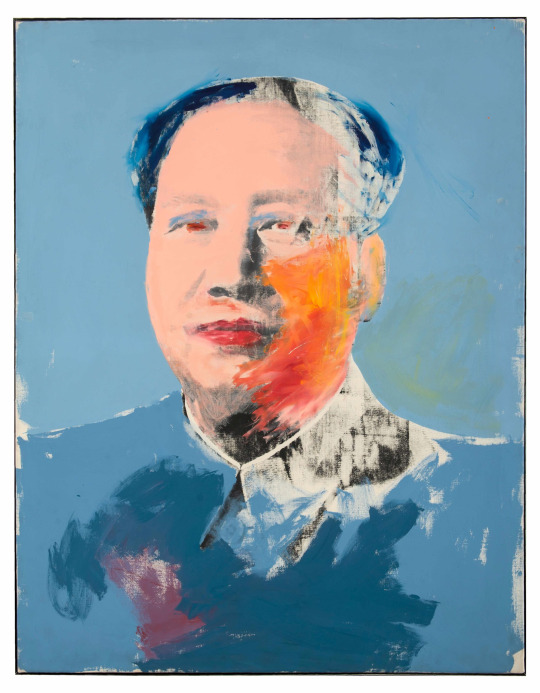
Andy Warhol, Mao, 1972. Acrylic, oil and silkscreens on canvas. 208 x 163cm.
Luckily got to see the new exhibition Three Times Out in the Hugh Lane Gallery Dublin City yesterday on the second day of the opening.
Before visiting the exhibition I definitely knew about Warhol but hadn't had any major knowledge about him in regard to his work and works outside of his Marylin's and Campbell Soup cans - So this was a huge eye opener for me.
The exhibition opened with his floating Silver Clouds - but what fascinated me most was the next entry room of his sketchbooks. They resonated with what I see a lot of the time with artists sketchbook's, which for some reason surprised me because I had had this view of the artist that he was just someone who had a lot of people make his work for him in a factory consumer type setting. These pages were filled with beautiful fine line ink drawings sometimes - containing blasts of colour which stained parts of the page. This room was by far to me the most authentic and interesting. It's like looking into how everything started for him and what kind of artist he was maybe before some if his work became tainted by perhaps what the public makes of it and critics ideas.
The exhibition proceeded into his screen prints and some of his most famous works including those he shared with Jean Michel Basquiat which were amazing to see in person - mostly because I wasn't expecting it and for the fact that I knew and appreciated Basquiat's work much more before visiting Warhols exhibition. One of the works which I adorned over was their collaboration Lice, (unknown date). It was a small perhaps, 8 by 10 painting/screen print collar of the two artists depicting a lice which seemed to have been a reoccurring theme within basquiats work - using these teeming insects as a metaphor for people or perhaps the culture of capitalism at the time (1950s).
A huge subject being put forward throughout the exhibition about Warhol seemed to be his mixture of the subjects - Disaster, beauty and celebrity.
All in all, there seems to be a huge enigma around him - I still haven't made up my mind about him and his intentions as an artist but all I can say is that his works and the themes he deals are within a huge pool of political, aesthetic complexities and pop. I think his personality or ambitions got him where he needed to be to create the work he was and after he got there - the name Andy Warhol and his work took on a life of his own which he tried to contain but it was too late. I think the work he made was the product of the society and politics of the time. Artists are deep people who divulge in all aspects of the world in order to create some form of understand visually for people - this can be a heavy load.
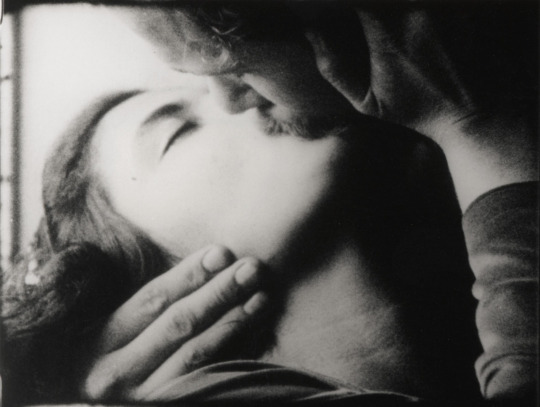
Andy Warhol, Kiss, 1964. 16mm film transferred to video (black and white, silent) 55 minutes.
3 notes
·
View notes
Text

We have a team of experienced and professional web designers in Dublin who can create a fast and good website for your business. We have over 10 years of experience, working in this business. We are confident in delivering the best possible service to our clients. For more information about our service, please visit our website.
0 notes
Text
This is the second story I’m posting about a transwoman sexually exploiting or trying exploit children in just one day.
A trans-identified male who was convicted for the possession, production, and distribution of horrific child abuse materials has been released from prison early in Ireland, despite not being legally allowed to even be in the country.
Bruno Binda De Souza, who also uses the name Bruna Meirelles, was released from prison on October 26 after being caught with “thousands of depraved child abuse images.”
De Souza, 32, had previously pleaded guilty to four counts of possession of child pornography, five counts of production of child pornography, and one count of distribution of child pornography on three dates between December 2017 and July 2020. The materials were found on all of his electronic devices, including his phones and computer.
As reported by Sunday World, during the trial, the court heard how De Souza was introduced to child abuse material by a former client while using the drug crystal meth.
After viewing it for the first time, De Souza reportedly became interested and downloaded significant amounts of the material. The court was told that De Souza began distributing sexual images of children via WhatsApp and Facebook, and had engaged in sexual conversations about children with other pedophiles on the internet.
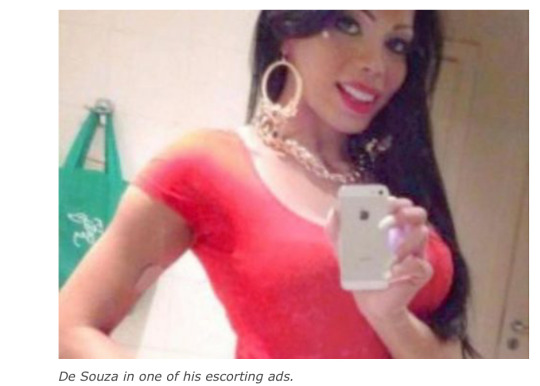
His crimes were uncovered as part of an operation into child abuse material called Operation Ketch. Gardaí, Ireland’s national police force, were notified of De Souza’s activity by the US National Centre for Missing and Exploited Children (NCMEC). Guardaí then launched an investigation into De Souza and seized multiple devices.
On one phone, 2,464 illegal images were uncovered, with 752 images and videos being found on another phone. Additional evidence was uncovered on his MacBook.
Detective Garda Martin Allen told the court that some of the child abuse images found were “unique” in that Gardaí working the Cyber Crime division had not come across them before. Police often cross-reference child sexual exploitation images against catalogues of media that have been uncovered in the past in order to assist in the gathering of information of importance, including tracking distribution and locating victims.
De Souza, who is a Brazilian national, was based in Dublin at the time of his crimes and, during the criminal proceedings, his visa expired. He was expected to be deported upon his release, but has reportedly been allowed to freely leave Midlands Prison and enter the community.
Prior to his arrest, De Souza had been active as a prostitute in Ireland, charging 250 Euros per hour. Operating on Irish escort websites under the name “TS Pocahontas” since 2011, he earned thousands of Euros per week. His profile, which has since been removed, boasted of De Souza’s penis size.
Despite the horrendous nature of the materials De Souza was found with and distributed, presiding Judge Martin Nolan portrayed De Souza sympathetically.
“I don’t think she is a bad person but, she committed serious offenses and the court must punish her for her misbehavior,” Judge Nolan said, using feminine pronouns to refer to De Souza.
Judge Nolan also stated that De Souza had no previous convictions and had co-operated with the Gardaí in handing over passwords to his devices.
In 2020, Nolan sentenced De Souza to only three years in prison, but backdated it to when he was first placed in custody. His October 26 release indicates he was turned loose just 2 years into the sentence.
While in prison, De Souza had reportedly demanded a hairstylist or aesthetician be sent in to visit him, but his request was rejected.
#Ireland#child abuse material#Bruno Meirelles is Bruno Binda De Souza#Operation Ketch#The US National Centre for Missing and Exploited Children (NCMEC).#TS Pocahontas#Judge Nolan felt bad for a prevert#Transwoman released from prison early
25 notes
·
View notes
Text
Ireland & Sweden!
This past weekend was my last weekend trip of the semester! It is crazy that the semester is coming to an end. Monday, May 1st was Labor Day in Europe, so we had a four-day weekend. Emma and I went to Dublin, Ireland, and did a day trip to the Cliffs of Moher on Saturday. On Sunday, we flew to Stockholm, Sweden, and spent one day there. We got back to Florence on Monday evening. This post is long, but it is mostly photos!
This weekend was definitely a whirlwind of travel. On Thursday night, we took a train to Bergamo and then an Uber to the airport, where we slept until we could get our boarding passes from the Ryanair desk. Since we were leaving the EU, we couldn't get mobile boarding passes and therefore couldn't go past security until 4:30 am. Our flight left at 6:30 am, and we arrived in Dublin at 8:30 am.
We planned out an itinerary for the day since we had pre-booked tickets. We started with a quick donut breakfast!

Strawberry cheesecake, cookies and cream, and red velvet from The Rolling Donut!
Next, we dropped our backpacks off at a convenience store that had luggage storage.
Our first stop was Dublin Castle.

The drawing room!
We walked through the small garden and stumbled upon a museum of glass that was free admission!


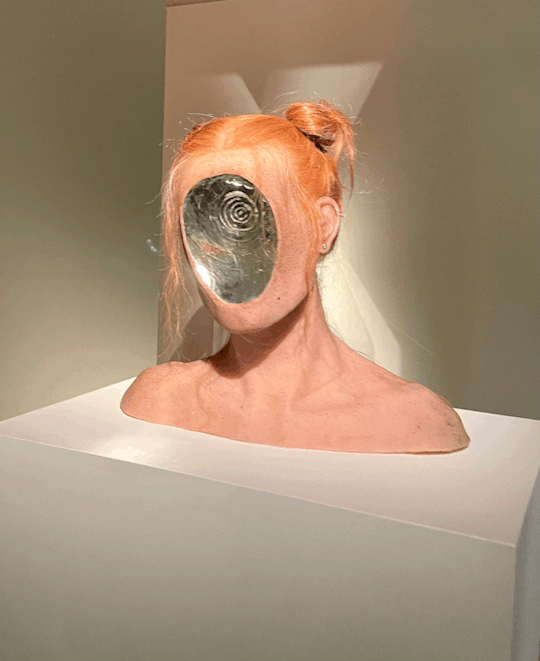
Lifelike sculpture!
After the museum, we walked to Trinity College Library to see the Book of Kells. he book depicts the four gospels and illustrations with beautiful details that are visible even after so many centuries. No photography is allowed of the Book of Kells.
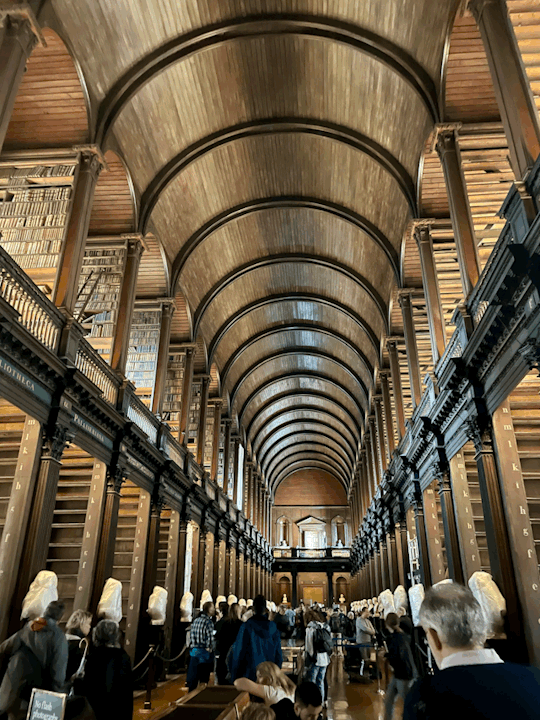
This is called the Long Room! It reminds me of Hogwarts.
For lunch, Emma and I went to Nando's.

Chicken sandwich with chips, as they say in the UK.
Our next destination was Saint Patrick's Cathedral.

It is the largest cathedral in Ireland.

The church had beautiful stained glass, and I learned a lot about the history of Ireland.
After visiting the cathedral, we walked to the Guinness Storefront.

The storefront is massive, with multiple floors, and each level explains a different stage of Guinness beer production.
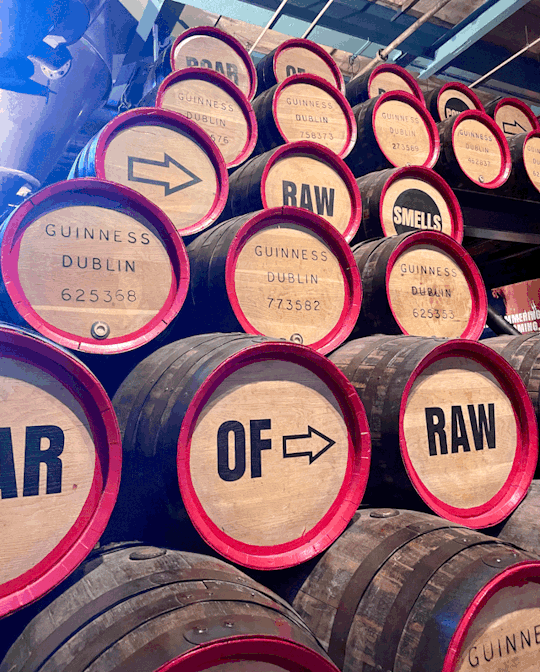
We got to do a tasting of the beer, which was my first time trying it!

A free drink was included in the tour, so Emma and I got ciders!
It was around 3 pm when we finished at the storefront, and I started to feel exhaustion kick in. But we powered through and walked to Kilmainham Gaol for the last tour of the day.
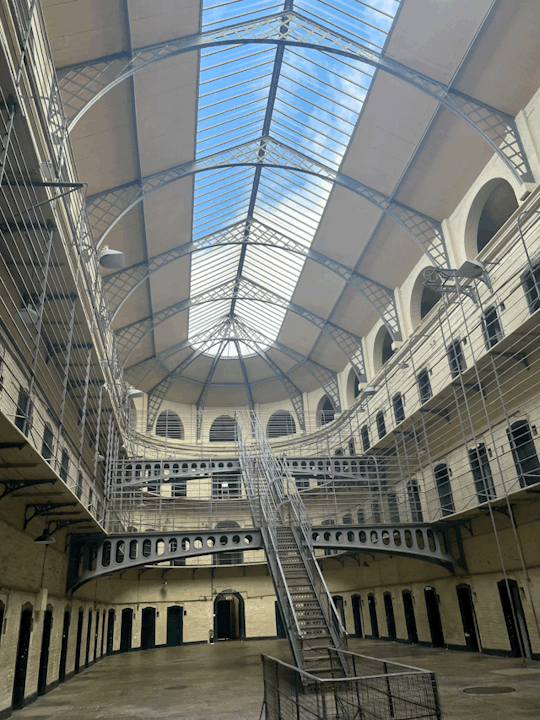
The jail opened in 1796 and closed in 1924.
This was probably my favorite tour of the day, and we learned a lot about Irish history because the jail was home to many Irish revolutionaries.
For dinner, we went to Celtic Nights. It was a dinner and show restaurant where we heard Irish folk music and saw Irish dance! It was so lively, and I was very entertained!

I had a traditional meal of braised Irish beef and potato soup.
To end the evening, Emma and I got pints of cider in the Temple Bar area. There were so many pubs and people everywhere, a very lively area.

This is the most famous pub in Dublin!
We went to the Airbnb for an early night because we had another early morning the next day.
On Saturday, we had a tour of the Cliffs of Moher and Galway with the company Wild Rover.

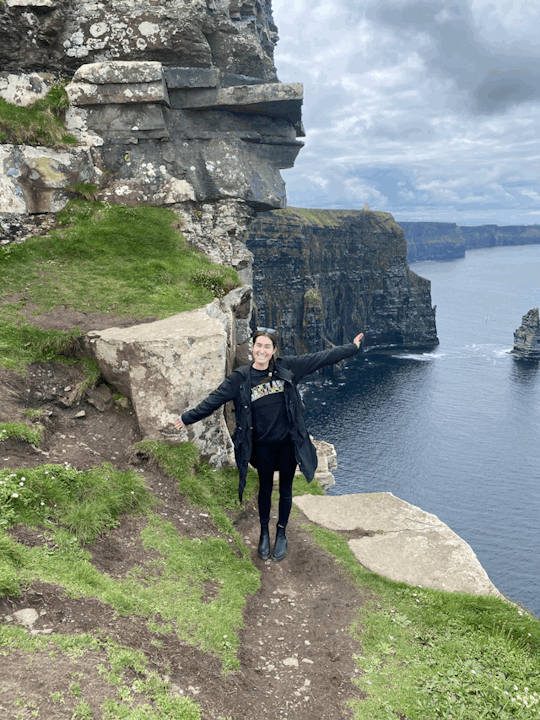
The Cliffs of Moher!
In Galway, we got lunch and ice cream first.

Grilled cheese with cheese, goat cheese, shredded chicken, and red pepper relish! With a side of pesto mayo, so delicious!
We also went to O'Connell's bar, where Ed Sheeran filmed the music video for his song Galway Girl and had a pint.


The main street in Galway!
Moving on to our day in Stockholm, Sweden on Sunday. We got there in the morning and went to get breakfast!

Walnut pastry from Fabrique Stenugnsbageri! So yummy!!
Then we went to the Vasa Museum to see a viking ship!

It was so cool to see! Unfortunately, the ship sank after 20 minutes of its maiden voyage.
We also visited the Abba Museum!
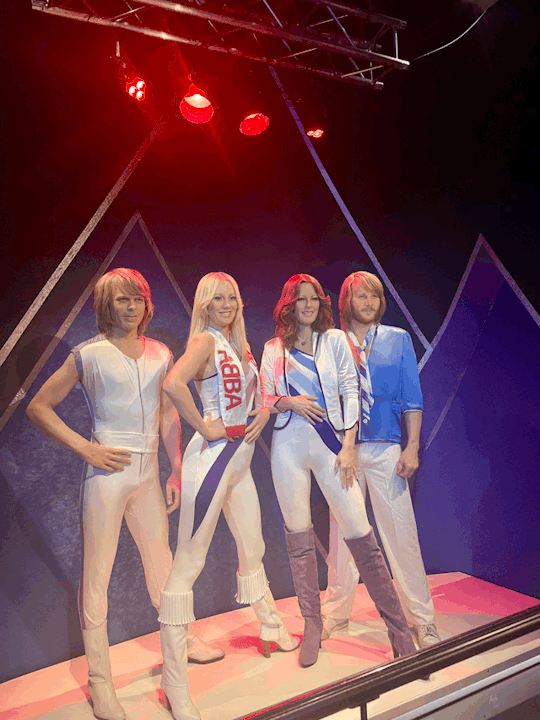
We saw the clothes they performed in and learned about how the band got together and became so successful!

Towards the end of the day we went to old town and got dinner there.

Stockholm is so pretty in the spring!
The long weekend was very fun and packed with lots of activities. We really ended the semester with a bang! I have to say that I am glad I don't have to get on a train, bus, or plane next weekend. Instead I will be soaking up the last of Florence and studying for my final exams.
8 notes
·
View notes
Text
THE NEW TITAN OF UK RAP NEMZZZ DROPS DEBUT MIXTAPE DO NOT DISTURB
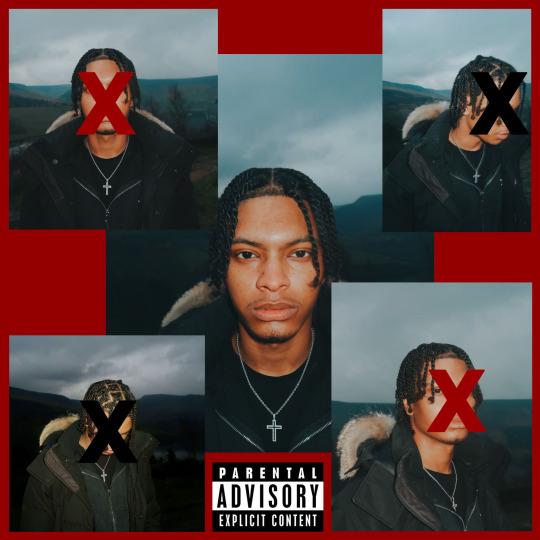
Manchester rapper Nemzzz today (Friday 15th March) unveils his much-anticipated debut mixtape DO NOT DISTURB. The 11-track tape is Nemzzz’s most expansive drop to date, an exploration of how the young artist is shaped by his upbringing and his fame. DO NOT DISTURB is available in physical format on CD & cassette in a first for the Mancunion.
Marrying bars laced with Nemzzz’s wicked sense of humour, earworm hooks and a raw soulful-drill production - DO NOT DISTURB is set to cement Nemzzz’s status as the new titan of UK Rap. Opening with late night confession ‘REFLECTION’, Nemzzz raps with real bite about the pitfalls of social media activism. New single ‘ETA’ sees Nemzzz unite with German rap heavyweight Luciano, trading bars over a siren-like beat. The new cut arrives with a video shot by DonProd in Frankfurt whilst Nemzzz was in town to appear at Luciano’s stadium show.
Recent single ‘PTSD’ splices a haunting vocal flip with a laid-back production from frequent collaborator Zel, as Nemzzz turns teacher once more - speaking on how he uses his music as catharsis to process his feelings. The cut landed last month to a co-sign from Central Cee. The shimmering, jazz inflected ‘L’S’ arrived in January to acclaim from the likes of The Observer, Fader, CRACK, NME spins across BBC Radio 1, 1Xtra and more.
Atmospheric, intense cut ‘DOOM’ gives way to the relaxed groove of playful love song ‘STAR SIGN’. On ‘NEED YOU’, Nemzzz rides out the ups and downs of a toxic relationship. ‘REASSURANCE’ melds ghostly vocal samples with a stripped back production as Nemzzz reassures his girl he’d drop her off for her ‘nails, hair, lash appointment too’. Nemzzz picks up the pace on ‘VENICE’ featuring rising rapper JayG. Title track ‘DND’ details how the run-up to the project was filled with hostile haters and the need to cut off day one friends. Rounding out the tape is ‘MONEY AND VIBES’, which sees Nemzzz bring UK flavour to a flip of Justin Timberlake’s ‘Rock Your Body’. The single topped the A list at 1Xtra on release last year and continues to rack up over +1M streams a week.
Nemzzz is one of the most exciting breakout rap talents of recent years. An old head on young shoulders, Nemzzz is relatable in a different way than a lot of his rap peers; driven less by punchlines about Birkin bags and more by the challenge of helping his young fans navigate their way through growing pains. The rapper is shaped by his tough upbringing in Gorton, using his music to reflect on his experiences including heartbreak, fake friends, financial literacy, finding your own path, and managing mental health amid social media addiction.
The DO NOT DISTURB tape follows a massive 2023 for the young star with a consistent slate of releases including his debut EP Nemzzz Type Beat (which was pulled together in just 17 days in a flex of his innate talents) alongside a string of singles including ‘Therapy’ (Spotify Rap UK Cover) and ‘8AM IN MANNY’ which landed to props from some of the biggest rappers in the world - Drake and Lil Yachty. Last year saw Nemzzz deliver his first sold-out headline tour alongside performances at festivals including Glastonbury, Ibiza Rocks and more.
Nemzzz will be heading out on his second headline tour this Spring with dates across the UK and Ireland. He will be kicking off in Dublin on 30th April and culminating in a homecoming show on 7th May in Manchester. With three dates already sold out - the tour is set to be another huge smash for the young star. TICKETS/MORE INFO
Since bursting onto the scene at the tender age of 14, Nemzzz has relentlessly chipped away at his craft – building steady buzz amongst the industry, media and fans alike. With over 180M combined streams in 2023, 9 Million TikTok views, tips including BBC Radio 1xtra's Hot For 2023, Amazon Music x Hunger Magazine Ones To Watch, No Signal Class of ’23, Best Newcomer Nominee MOBO Awards 2022, plaudits from Pitchfork, The Face, DAZED, The Guardian, HYPEBEAST, CLASH, Complex UK and NME - Nemzzz is making serious moves.
#nemzzz#do not disturb#dnd#uk rapper#uk#united kingdom#england#music#youtube#spotify#artist#musician#soundcloud#rapper#culture#rap#art#drill#drill rap#drill music#uk drill#underground hip hop#hip hop#Spotify
1 note
·
View note